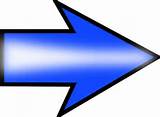THURSDAY
6/7/22
(Not a writing day.) Lawrence and Frieda go up to town,
probably by a mid-morning train, have their photographs
taken (Lawrence's is, apparently, still extant) and developed,
then take them to the American Consulate, where everything
is, this time, routine. […There were no difficulties…]
Yet they don't go back to Thirroul today, but remain in
Sydney and visit one of the couples they met earlier on
the Malwa on the way to Sydney - Denis and Laura Forrester.
(Lawrence wants, apparently, to spend more time in Sydney,
for he has an idea, apparently, about his next chapter.)
There is a photograph in the Forrester family album of
Frieda and Laura Forrester sitting on the verandah of
the house the Forresters are renting, in Australia Street,
Camperdown, knitting or sewing together (Lawrence mentions
in a later letter that Frieda was doing some embroidery).
There are also several snaps of Frieda and Laura Forrester
strolling in the Botanic Gardens - almost certainly taken
by Denis Forrester, and probably during the same visit.
Notably absent from these photographs is Lawrence himself.
The assumption must be that he is engaged elsewhere, at
least when the Botanic Gardens snaps are taken. The strong
probability is that he is, today or tomorrow, doing some
research for his novel, which is now stuck again - as
far as the political plot is concerned - after Jack Scott's
visit on Sunday. He and Frieda go back with the Forresters
to Camperdown, where they have dinner there with their
other Malwa acquaintances, Mr and Mrs Marchbanks (and
who are staying in the same rented premises in Australia
Street, and who are also English immigrants brought out
to Australia to work in a nearby clothing factory in Camperdown).
Denis Forrester recorded the event for Edward Nehls in
1958, as Forrester later explained via Fred Esch: […he
came to look us up…his royalties check had not arrived
and he was short of cash. Marchbanks had more money than
we at the time, and he willingly did what he could to
help Lawrence. It was not a large amount anyhow…As
a result of this contact, D.H. invited the four of us
to "Wyewurk" for a week end…].
FRIDAY 7/7/22
(Session #27 - MS pp 469-c486: c3900 words.) Lawrence's
next chapter (xvi), "A Row in Town", which he
begins writing after his return to Thirroul, is to be
the climax of the novel (even though it is two chapters
before the end), and again starts very discursively. His
problem, and it is an acute one, is that his only source
of information for the core plot-element of his novel
- the activities of the Diggers and Maggies - is now,
with the severing of contact with Scott and Rosenthal,
terminated. Consequently, his narrative is not only stalled,
but is now in limbo, with no apparent prospect of a credible
or logical conclusion. However, while up in Sydney he
apparently undertook some research into some May Day disturbances
that occurred in Sydney over a year before. This is to
provide him with the ingredients he now so desperately
needs to finish his story. His most likely initial source
for information about this incident is Gerald Hum, who
now is Lawrence's only first-hand source of information
about what's going on in Sydney. We have no reason for
knowing for certain, but it is likely that while staying
with Hum at his home in Chatswood on Wednesday night,
Lawrence, seeking more information about the Diggers and
the union movement, learned from Hum about some May Day
clashes (there was more than one) that occurred in the
Domain - Sydney's "Speakers Corner" - the previous
year. It is possible that Hum suggested that, if he wanted
to know more about this violent confrontation between
left and right, he might consult the newspapers on file
at The Sun newspaper office in Elizabeth Street,
where Hum's cousin, Howard Ashton, worked. (During the
clashes Garden is "counted out" by groups of
ex-soldiers - no doubt elements of Scott's "garage"
- as is "Willie" Struthers in the text.) Added
credence to such a speculation is given by the fact that
Lawrence cites The Sun as a source of information
in the eventual "A Row in Town" text. It is
also indicative that Lawrence makes some effort to "disguise"
this source, changing the politics of the paper from conservative
(in reality) to socialist. [...all except the Radical
paper, the Sun, praising Ben for his laudable attempts
to obtain order by the help of his loyal Diggers. The
Sun hinted at other things…] Lawrence does not
change things unless he has a reason for doing so. The
fact that he specifically quotes The Sun makes
it likely that newspapers filed in its office, which was
a short walk from the Botanic Gardens, was the primary
source of his "A Row in Town" information. Wherever
he obtained this colourful material, his "research"
provided him with the elements he needed to take his story
forward. Yet there was another ingredient in what he wrote
in "A Row in Town" - repetition. As he did several
weeks previously, with his arrival at "Wyewurk"
and the visit of Jack Scott on the King's Birthday weekend,
he reprises his June 24 visit to the Trades Hall, and
his interview there with "Jock" Garden, while
also elaborating on what he (and Hum) did between the
meeting with Garden in the morning, and the confrontation
with Rosenthal in the evening. However, the "A Row
in Town" chapter begins, again, in a minor key, with
Lawrence discoursing about herd instincts and "the
mob-spirit". […Why does a flock of birds
rise suddenly from the tree-tops, all at once…and
swirl round in one cloud…there was no visible sign
or communication given. It was telepathic communication…]
This rambling exegesis goes on for 17 hand-written pages,
without advancing the political plot one jot. It is likely
he stops here, half-way down p486, ending session #27,
and continues more substantively next morning.
